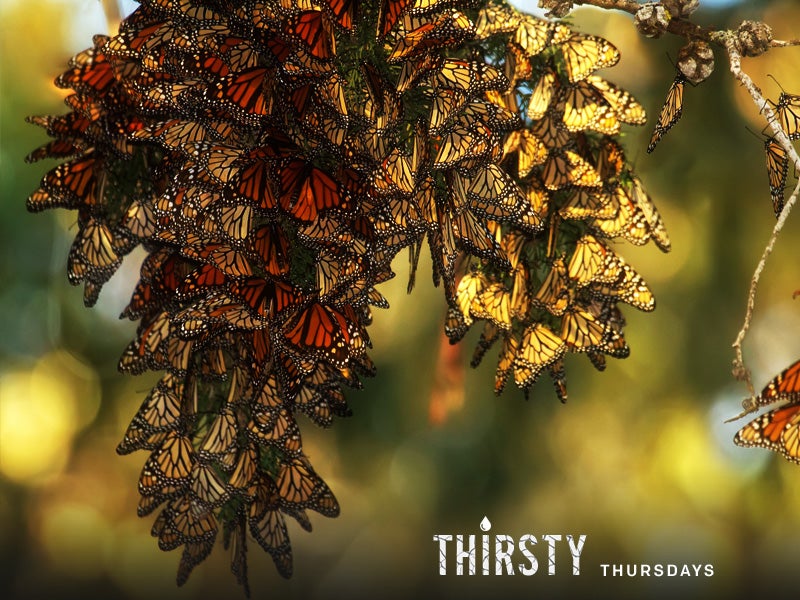5 Species Starved for Rain
With the sixth mass extinction upon us, we explore how the drought is devastating five species across the western United States.

This page was published 10 years ago. Find the latest on Earthjustice’s work.
News agencies have been announcing that the “Worst Drought in 1,000 Years” is coming to the American West by the end of this century and that the sixth mass extinction is upon us. The evidence supporting these studies is pervasive, especially to those living in California and the rest of the western United States where drought has taken a devastating toll on nearly all species in the region to some degree. We recently profiled the impacts of the drought on fish like wild salmon in California’s streams, but even species that don’t rely directly on flowing water are being pushed to the breaking point.
Here are just a few:
1. Grizzly Bears
Grizzly bears and black bears in the western U.S. are facing a host of problems linked to environmental changes, and the lack of rain is not improving their outlook. Bears’ food sources are slowly disappearing: few berries grow without water and pine beetle infestations are killing white bark pine trees that produce seeds (also known as tasty bear snacks). Lack of food can prevent bears from reproducing. And, if new cubs are born, mothers are struggling to find the nutrients that they need to nurse their young, leading to smaller, weaker cubs. Finally, as bears leave the mountains and forests to venture into towns and cities in search of food, run-ins with humans become more frequent—which usually does not bode well for the bear.
2. Barn Owls
Dry conditions are affecting birds beyond the species that live directly on lakes and rivers. The drought is also pushing owls and other birds of prey to the brink, especially in southern California. Last spring, 90 to 95 percent rate of their nests were missing eggs and chicks. One barn owl at the Audubon Starr Ranch Sanctuary laid a single egg, already less than usual, but soon abandoned it when she needed to hunt after a long absence by her male partner who had stopped bringing her food. While scientists are still determining the exact cause of the populations’ decline, they suspect that a reduction in rodents—a key food staple for the birds—is causing the birds to starve and resulting in incredibly low reproductive rates.
3. Honey Bees
It’s not a secret that honeybees are in trouble. From mites to toxic pesticides, these pollinators’ colonies have decreased from an estimated 5 million in the 1940s to about half of that today. Drought in the western United States is only adding to their stress. Wildflowers that usually bloom and support honeybees with their nectar and pollen have disappeared with the rain, forcing beekeepers to supplement their colonies’ diets. Unfortunately, human-made bee food doesn’t come close to the real thing, and honeybees are becoming malnourished.
The drought is also putting a strain on honey production since bees need nectar to make it, and there are fewer bees in general, increasing the cost of bee rentals to farmers who need them to pollinate their crops. In California, the almond industry requires the use of 1.4 million colonies of honeybees for pollination—that’s around 60 percent of all managed honeybee colonies in the country. These almond groves are one of the state’s biggest water guzzlers but may also be one of the largest remaining natural sources of food for the bees. As the drought drags on and farmers fallow their fields and orchards, beekeepers are beginning to truck their colonies out of the state to forage.
4. Desert Tortoises
The Agassiz desert tortoise, a threatened species that has existed for 15 to 20 million years, can survive one year or more without access to water. Despite this incredible trait, this species is still struggling to survive years of ongoing drought in the Sonoran and Mojave Desert regions of California, Nevada and Arizona. This reptile has begrudgingly tolerated warmer and warmer temperatures over the years; it evolved in a cooler climate where, more than 7,000 years ago, Joshua and juniper trees lined lakes in this region.
The tortoise has developed a burrowing technique that helps it avoid predators, and it is likely that this strategy has also allowed it to survive extreme heat, helping it to survive during times of water scarcity in the past. The death of desert tortoises marks trouble in the greater ecosystem. As the drought kills off annual plants, populations of kangaroo rats and rabbits—who depend on the plants for food—begin to crash. Without these animals, larger predators like coyotes turn to the tortoises to fill their empty stomachs.
5. Monarch Butterflies
These orange and black butterflies can travel at speeds up to 25 miles per hour. They make their way 2,500 miles across North America from Mexico to Canada in a migration that takes at least four generations of monarchs to complete the journey. Over the last ten years, their numbers have fallen rapidly due to dry conditions in Mexico and the United States. In 2013, the butterfly population living in its winter refuge in Mexico dropped by 59 percent. Scientists link the primary cause of this population crash to disappearing milkweed plants, which are dying due to drought and an increased use of pesticides. This is the only plant that the monarch caterpillars can digest, and it is becoming more difficult for each generation of butterfly to prosper and continue along its migratory journey as these plants become scarcer.
About this series
Thirsty Thursdays is a weekly blog series exploring the historic drought in the western United States. In the ongoing series, we’ll share expert opinions, breaking news, compelling articles and the work Earthjustice is doing to protect water resources in a time of extreme water scarcity.
Don’t miss last week’s post:“Succulents and Wildflowers Leave Water wasting Lawns in the Dust.”